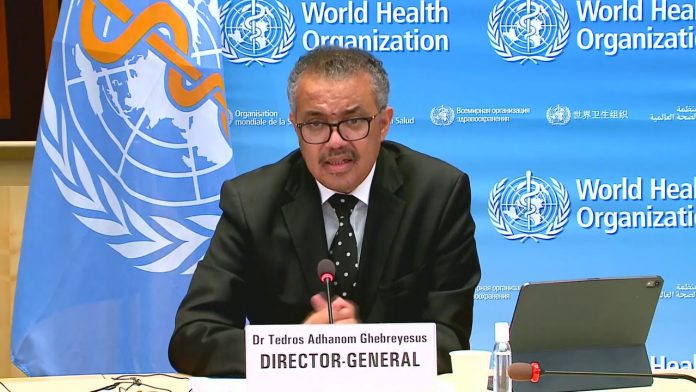Situation at a glance
On 27 June 2023, the IHR National Focal Point of Poland notified WHO of unusual deaths in cats across the country. As of 11 July, 47 samples have been tested from 46 cats and one captive caracal, of which 29 were found to be positive for influenza A (H5N1). Fourteen cats are reported to have been euthanized, and a further 11 died, with the last death reported on 30 June. The source of the exposure of cats to the virus is currently unknown and epizootic investigations are ongoing.
Sporadic infection of cats with A(H5N1) has previously been reported, but this is the first report of a high numbers of infected cats over a wide geographical area within a country.
As of 12 July, no human contacts of A(H5N1) positive cats have reported symptoms, and the surveillance period for all contacts is now complete.
The risk of human infections following exposure to infected cats at the national level is assessed as low for the general population, and low to moderate for cat owners and those occupationally exposed to H5N1-infected cats (such as veterinarians) without the use of appropriate personal protective equipment.
WHO continues to monitor the situation and work in close collaboration with the animal and public health sectors, regional agencies, the Food and Agriculture Organization of the United Nations (FAO), the World Organisation for Animal Health (WOAH), and other partner agencies in Poland.
Description of situation
On 27 June 2023, the IHR National Focal Point of Poland notified WHO of unusual deaths in cats across the country. As of 11 July 2023, a total of 47 samples have been tested from 46 cats and one caracal (Caracal caracal). Of these 47 samples, 29 (62%) were positive for influenza A(H5N1). Positive samples were reported from 13 geographical areas within the country.
Some cats developed severe symptoms including difficulty in breathing, bloody diarrhoea, and neurological signs, with rapid deterioration and death in some cases. In total, 20 cats had neurological signs, 19 had respiratory signs, and 17 had both neurological and respiratory signs.
Fourteen cats are reported to have been euthanized, and a further 11 died. Post-mortem exams on a small number of cats are suggestive of pneumonia. According to the information available, the last known death among cats was reported on 30 June .
Genomic analysis of 19 viruses sequenced from this outbreak showed that they all belonged to the H5 clade 2.3.4.4b and were highly related to each other. Also, the viruses are similar to influenza A(H5N1) clade 2.3.4.4b viruses which have been circulating in wild birds and which caused outbreaks in poultry recently in Poland.
The source of exposure of cats to the virus is currently unknown and epizootic investigations are ongoing. There are several possibilities for the source of infection, among which the cats could have had direct or indirect contact with infected birds or their environments, ate infected birds, or ate food contaminated with the virus. Authorities are investigating all potential sources and to date have not ruled out any. Of the 25 cats for which the information is available, two were outdoor cats, 18 were indoor with access to a balcony, terrace, or backyard, and five were indoor cats with no access to the outside environment. Seven cats are reported to have had the opportunity for contact with wild birds.
This is the first report of high numbers of cats infected with avian influenza A(H5N1) spread over a wide geographical area within any country. Sporadic infections in domestic cats with A(H5N1) viruses, including A(H5N1) H5 clade 2.3.4.4b viruses, have been reported previously, following close contact of the cats with infected birds or from ingesting meat of infected birds.
Epidemiology of H5N1
Since the end of 2021, an unprecedented number of H5N1 outbreaks among poultry and wild birds has been reported worldwide. As of June 2023, the clade 2.3.4.4b viruses have become dominant in Asia, Europe, the Americas and Africa. Alongside wild bird and domestic poultry infections, there have been increased detections in non-avian species, including wild terrestrial (often scavenging) and marine mammals and occasionally in farmed or captive mammalian species, likely through contact with infected live or dead birds or their environments.
Since 2020, 12 human cases of avian influenza A(H5N1) clade 2.3.4.4b virus detections have been reported to WHO, four of which were severe cases and eight were mild or asymptomatic. It is unclear if the detection of the virus in these mild or asymptomatic cases resulted from infection or temporary contamination of the nasal passages. Most humans infected with A(H5N1) viruses have resulted from direct or indirect contact with infected live or dead poultry. Human infection with influenza A(H5N1) viruses can cause severe disease and is fatal in some cases.
Public health response
Response measures have been implemented by the national authorities in Poland. These include:
- Under the guidance of the public health authorities in Poland, all owners of infected cats are provided with a health self-assessment questionnaire and requested to self-monitor for symptoms of influenza-like illness (ILI) or acute respiratory illness (ARI) for 10 days since last contact with infected cat. As of 12 July, 70 individuals who had been in contact with confirmed cats have completed self-monitoring and none reported symptoms.
- Providing regular updates on the situation and sharing information and updates with partners, including international organizations.
- Epizootic investigations are underway to understand the epidemiological situation in cats and the likely source of exposure of cats to the virus.
- Preventive measures have been taken to prevent the occurrence of disease in humans by issuing publicly available general precautions for cat owners and individuals who have contact with sick animals suspected of avian influenza infection.
WHO continues to monitor the situation and work in close collaboration with the animal and public health sectors, regional agencies, FAO, WOAH, and other partner agencies in Poland and globally.
WHO is evaluating the existing candidate vaccine viruses (CVVs) of A(H5N1) through the WHO Global Influenza Surveillance and Response System (GISRS) to ensure valid CVVs are developed and available for pandemic preparedness purposes.
WHO risk assessment
To date, human A(H5N1) infections following contact with an infected cat have not been documented. Avian Influenza A(H5N1) virus detections in humans remain unusual, and sustained human-to-human transmission has not been documented.
To date, no symptomatic human contact of infected cats has been reported in Poland despite potentially close contact between cats and owners, and the capacity to detect a human case in contact with an infected cat is adequate in the country.
Therefore, based on current information, the risk of human infections following exposure to infected cats at the national level is assessed as low for the general population, and low to moderate for cat owners and those occupationally exposed to A(H5N1)-infected cats (such as veterinarians) without the use of appropriate personal protective equipment.
Based on the current information, the risk for humans at the regional level is assessed as low, due to: i) avian influenza surveillance activities in animals in Europe being strengthened since September 2022, when the unprecedented geographical extent (37 European countries affected) resulted in 50 million poultry being culled in affected establishments; and (ii) Currently, there are no reported instances of human infection with the A(H5N1) virus acquired from cats, although A(H5N1) infection in domestic cats has been confirmed in Poland.
Due to the uncertainties related to this event, including the source of infection, the risk assessment may change.
WHO advice
The reports of these events do not change the current WHO recommendations on public health measures and surveillance of influenza.
Due to the constantly evolving nature of influenza viruses, WHO continues to stress the importance of global surveillance to detect and monitor virological, epidemiological and clinical changes associated with emerging or circulating influenza viruses that may affect human (or animal) health and timely virus-sharing for risk assessment.
All individuals exposed to animal influenza viruses, and all contacts of confirmed human cases, should monitor their health for the duration of the known exposure period with additional seven days at a minimum.
All those exposed to known infected poultry, wild birds or other animals, or to farms under suspicion, should be registered and placed under close monitoring by local health authorities. This will facilitate the early detection of illness and timely clinical case management. If a person is suspected of having zoonotic influenza, the health authorities must be notified, and appropriate clinical case management should be provided.
Public health and animal health authorities should collaborate closely in the areas of information sharing, joint risk assessment, and response to outbreaks of zoonotic influenza at the human-animal interface, adhering to the One Health approach.
FAO, WHO and WOAH have issued a joint situation analysis and advice to countries in relation to ongoing avian influenza outbreaks in animals and the risk posed to human health. FAO, WHO and WOAH continue to review the situation, monitoring the rapidly evolving nature of the virus, and updating recommendations for curbing its spread, in addition to working with countries in preparedness and response, and facilitating collaboration across countries and sectors. The spread of the virus to five continents speaks to the need for global cooperation and alertness to protect animals, people, and economies.
WHO does not recommend any restrictions on travel and/or trade with Poland based on available information on this event.







